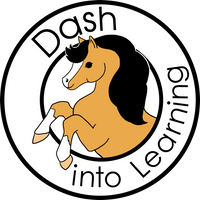Why Strong Reading Starts With Phonics, Not Whole Word

Are you a parent or educator searching for effective methods to teach reading? Look no further than phonics! Contrary to popular belief, strong reading doesn't start with recognizing entire words but rather by breaking them down into their individual sounds.
In this blog post, I'll talk about why phonics is important and how it can help people of all ages learn to read and write. I'll compare it to the whole word approach and share why the whole word approach is more difficult for children to grasp. So sit back, grab a cup of tea, and get ready to discover the power of phonics!
Please note: This article is based on typical neurotypical child development. If your child is neurodiverse, they may benefit from alternative teaching.
What's the difference between phonics and whole word?

The debate between phonics and whole word recognition is a long-standing one in the world of reading instruction. And, like most debates, there are pros and cons to each approach.
While phonics instruction focuses on teaching children the relationship between letters and the sounds they make, whole word instruction, on the other hand, relies heavily on memorization.
Phonics teaches phonemic awareness, while whole word teach word shapes.
Phonics asks the child to decode words to read based on the lessons they've learned. Whole word, on the other hand, focuses on word repetition and recall.
When teaching phonics, students are only asked to memorize the sounds, phonics rules, and exceptions. Teaching with the whole word method focuses on the meaning of words rather than their sounds.
Why Phonics Work

Numerous scientific studies have proven that phonics instruction is extremely effective. Learning the sounds, a few phonics rules, and irregularities is much easier for our young brains. Whole word ask you to memorize thousands of sounds.
Learning to 'sound out' words means you never have to rely on context, pictures, or guesswork. You can literally figure out any word with this solid basis.
In turn, reading comprehension quickly follows once the words are decoded. It's a pretty empowering experience for young students.
The Problem With Whole Word
The whole word method teaches reading by memorizing huge lists of words. It uses word shapes ( the overall shape each letter makes in a word) and makes English into an ideographic language (words become logos or images). The English language is not ideographic!
Getting children to memorize words instead of breaking them down and decoding them may make it seem like they make progress quickly at first. However, our brains run out of memory space pretty quickly. Reading progress can end up stalling at the third grade level because of this.
Using context clues and looking at or guessing from the picture teaches very poor reading habits, like ignoring the letter sounds. This just doesn't work when reading with the English alphabet.
How to avoid the "balanced" approach

The whole word method has been used in schools for decades with poor results. The science of reading and phonics is making a big comeback, but many educators still hold on to the whole word method. So they combine the two methods. They use some phonics and some whole word techniques.
This approach almost inevitably leads to barely any phonics being retained as it seems harder to teach at first. The balanced approach then becomes off balance, leaning heavily on whole word. This ends up giving phonics a bad rap as it isn't used properly.
We need to use programs that focus mainly on phonics. Decoding words takes time and practice, but in the end, it will make for real, confident readers.
What do you think? Were you taught with phonics or the whole word? Did either benefit or hold you back? We would love to hear from you.




